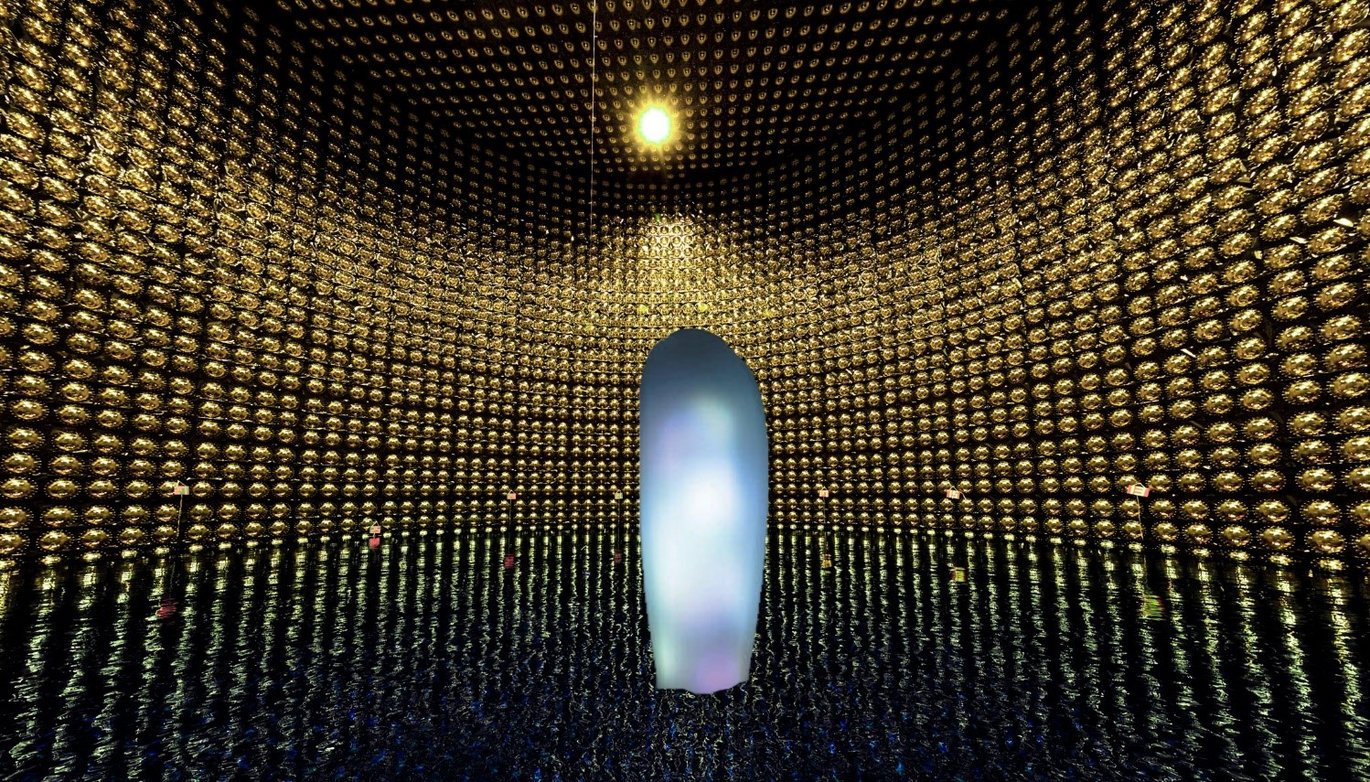Studenterkollokvium, Ihsan Ahmed Kolasseri: From dying stars to ARoS: The Superkamiokande

Oplysninger om arrangementet
Tidspunkt
Sted
Fys. Aud.
Supervisor: Thomas Tram
Deep down in the basement of ARoS museum, there is an exhibit titled 'Tom Na-Hui' that claims to light up each time a star dies in our universe. And deep down under Mount Ikeno in Japan, an observatory is feeding this sculpture data to light up at the right time. The observatory is the Super Kamiokande, a large detector that detects elementary particles called neutrinos. Neutrinos are dubbed 'ghost particles' because they rarely interact with other matter. They only interact via weak interaction and gravitational interaction. Detectors like the Super Kamiokande are the 'ghost hunters'. Since they don’t interact via electromagnetic radiation, the energy of an observed neutrino will be the same when it originated. Thus, studying neutrinos can answer a lot of our burning questions about the universe. The journey taken by physicists across the world to study and detect neutrinos is daring and challenging, and it includes a lot of patience. Years and years of waiting for instance. The hypothesis of the existence of neutrinos was proposed by Pauli in 1930 to answer the energy conservation in beta decay. Years later, in 1956, it was detected by Cowen and Reins, and their story is absolute madness. Trying to pull of an experiment with the detector 40 meters close to an atom bomb detonation? Fortunately, they didn’t have to go on with that plan, but it’s still crazy that the plan got approved. There are different sources of neutrinos. Our Sun is major source, and they are called solar neutrinos. Cosmic rays from space creates secondary particle showers, and eventually they also create neutrinos, called the atmospheric neutrinos. And neutrinos are also produced from Supernovas. When a massive star can no longer fight its own gravity, it violently bursts. At that time, it releases neutrinos from its core. The detection of these neutrinos means the death of a star. There are many types of neutrino detects around the world. Superkamiokande in Japan is a Cherenkov detector. It consists of a large tank with ultrapure water. The tank is lined with 1000s of photomultiplier tubes. When a neutrino interacts with a particle in the water, it imparts its energy to it and it will travel faster than the speed of light in water. This creates radiation and is called the Cherenkov radiation. The photomultiplier tubes capture the light intensities and maps the Cherenkov cones. From the shape, sharpness and angle of the cone, the type, energy and direction of the neutrinos can be determined. The Superkamiokande started off as a proton decay experiment. Even though they haven’t abandoned the search for proton decay, they are now actively involved in detecting the ghost particles.
In this colloquium, the story of neutrinos, the history and working of Super Kamiokande will be discussed. At the end, we will answer whether the exhibit is true to its description or not.
